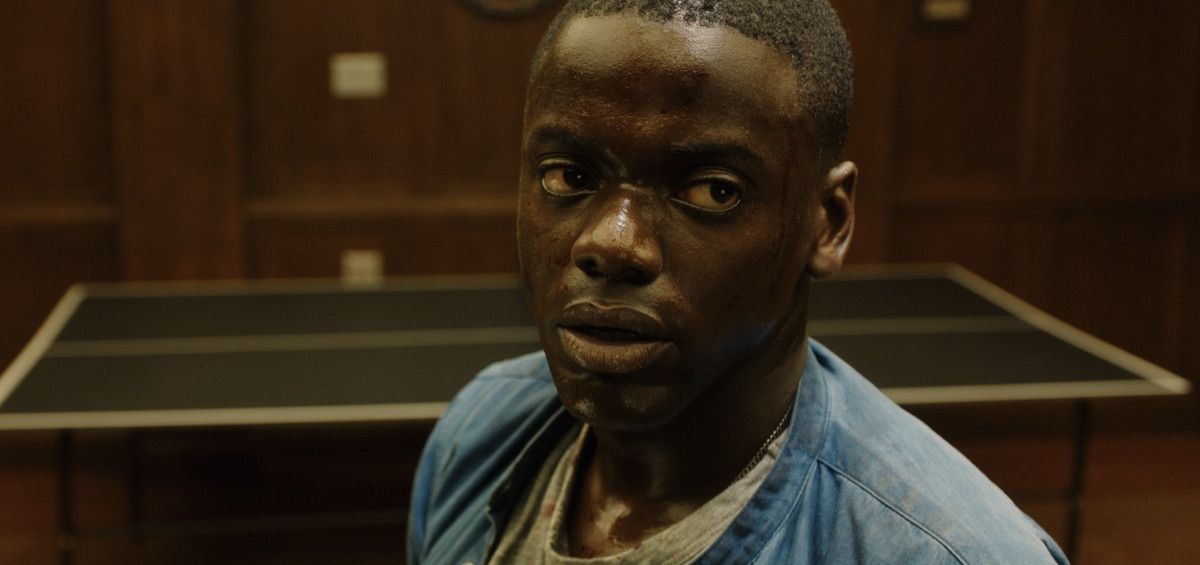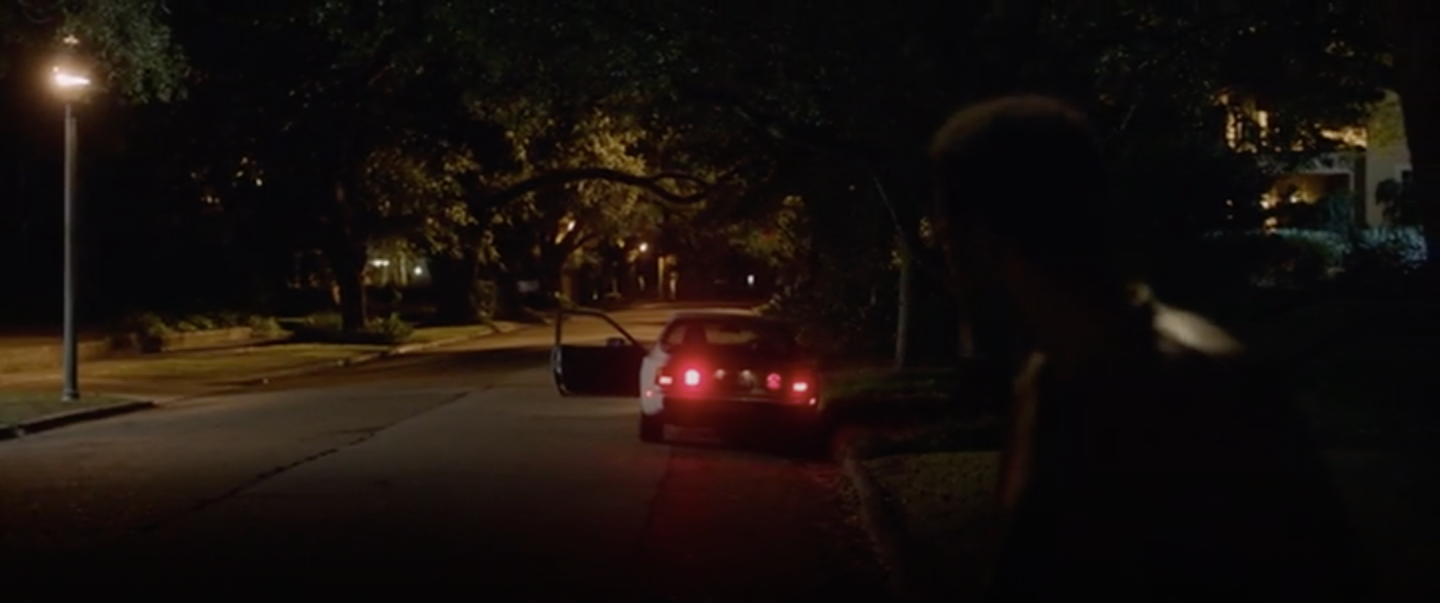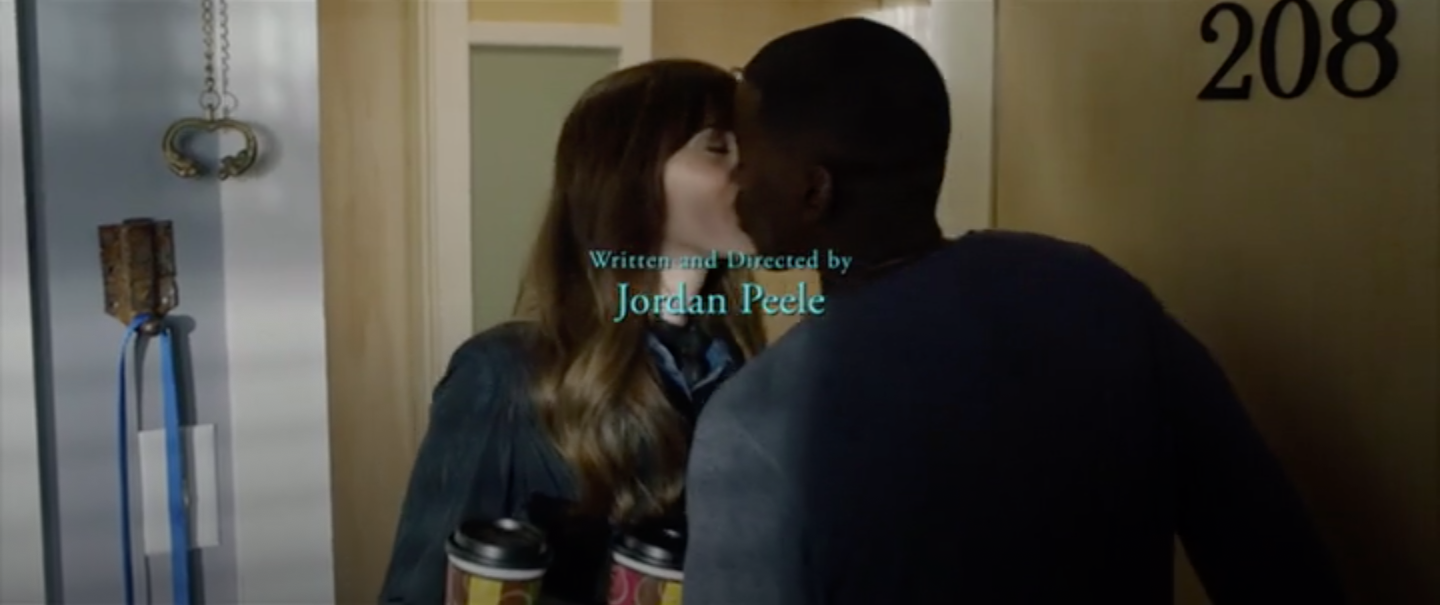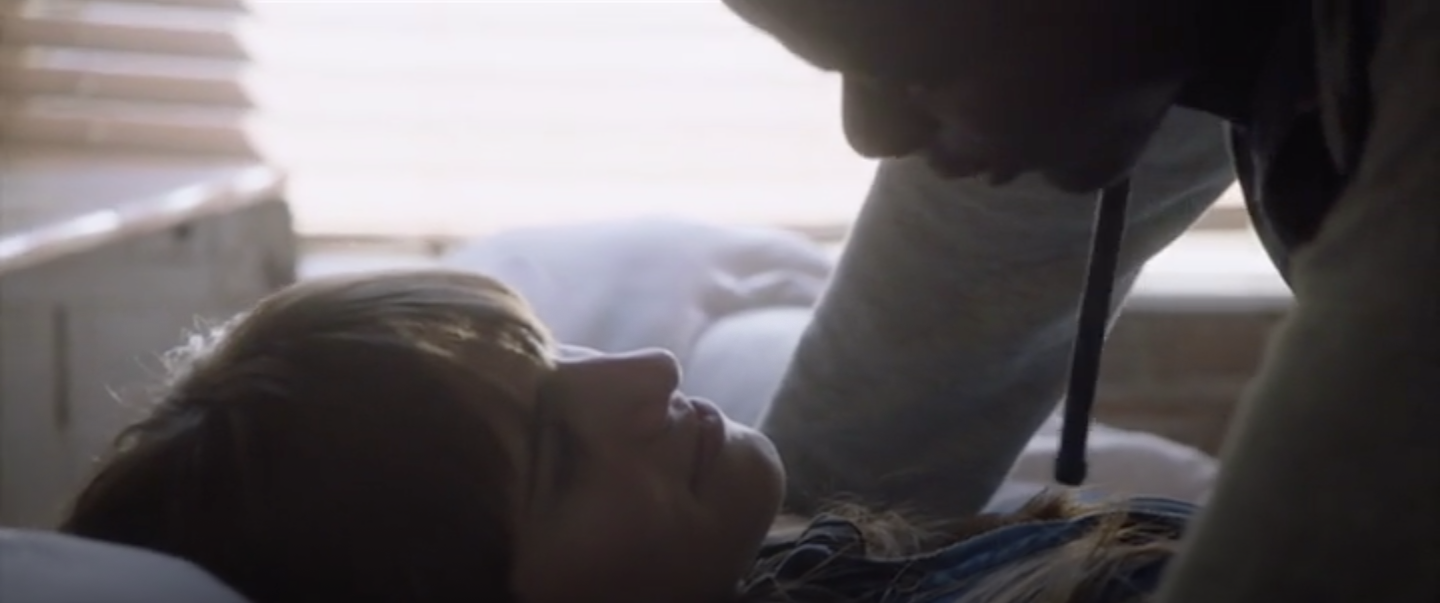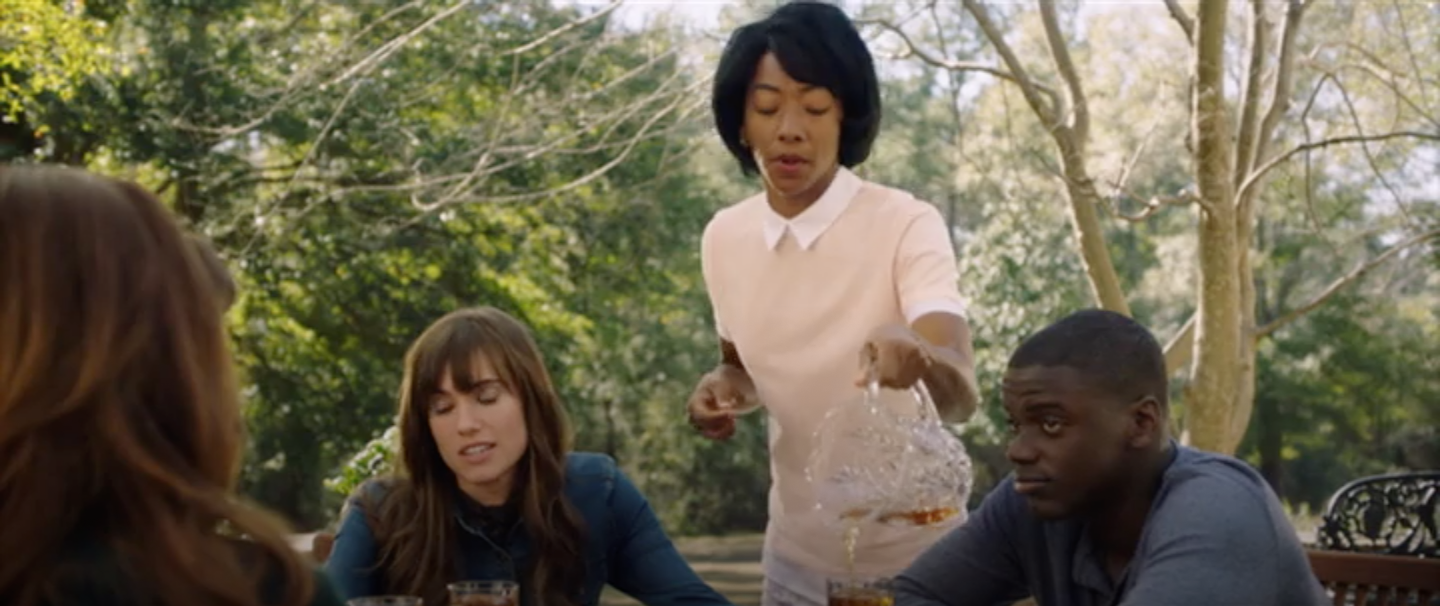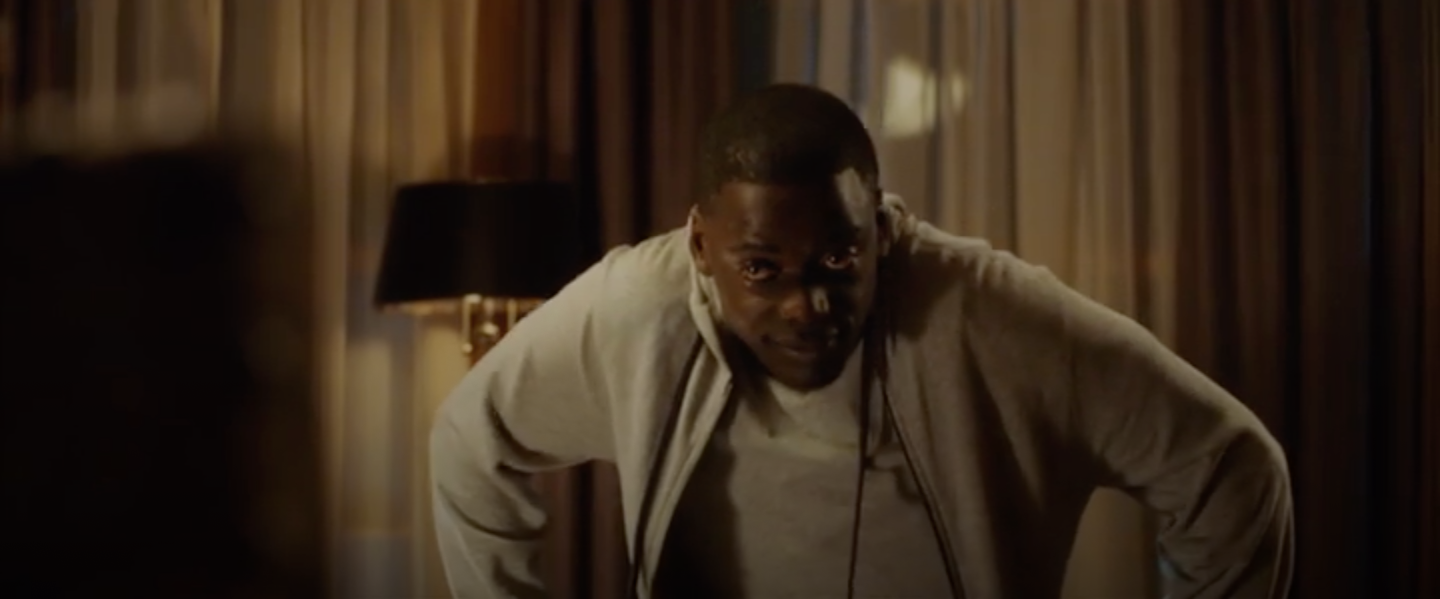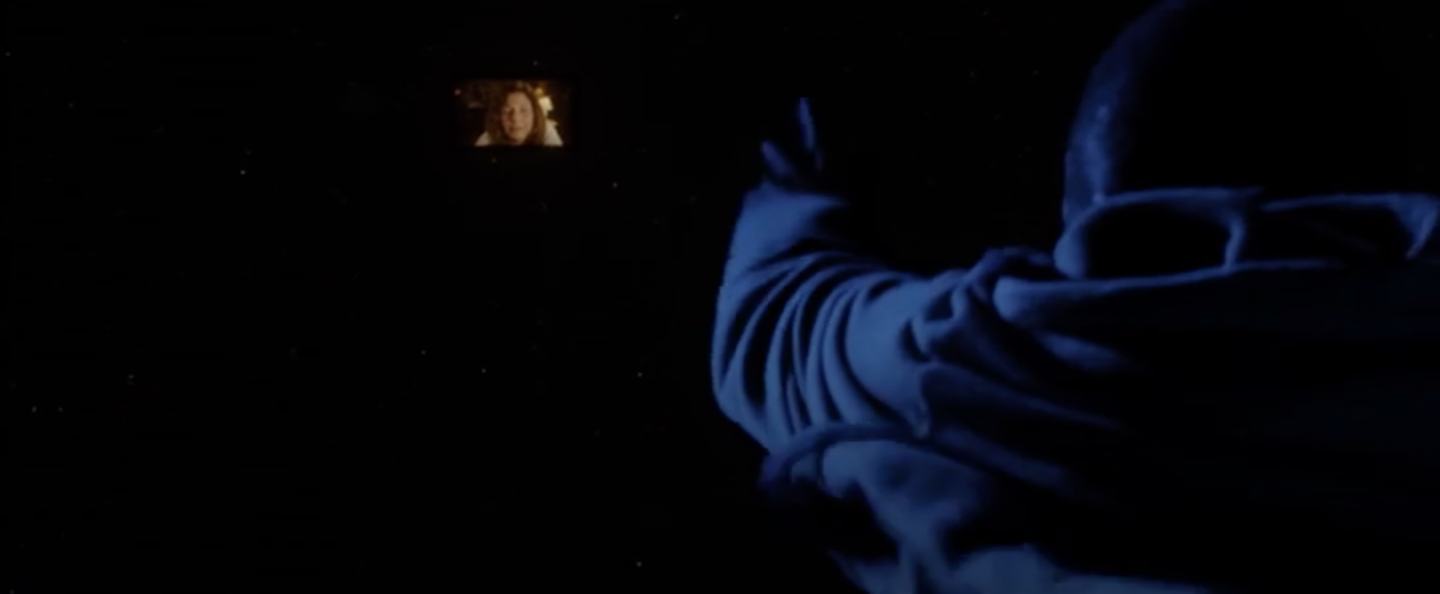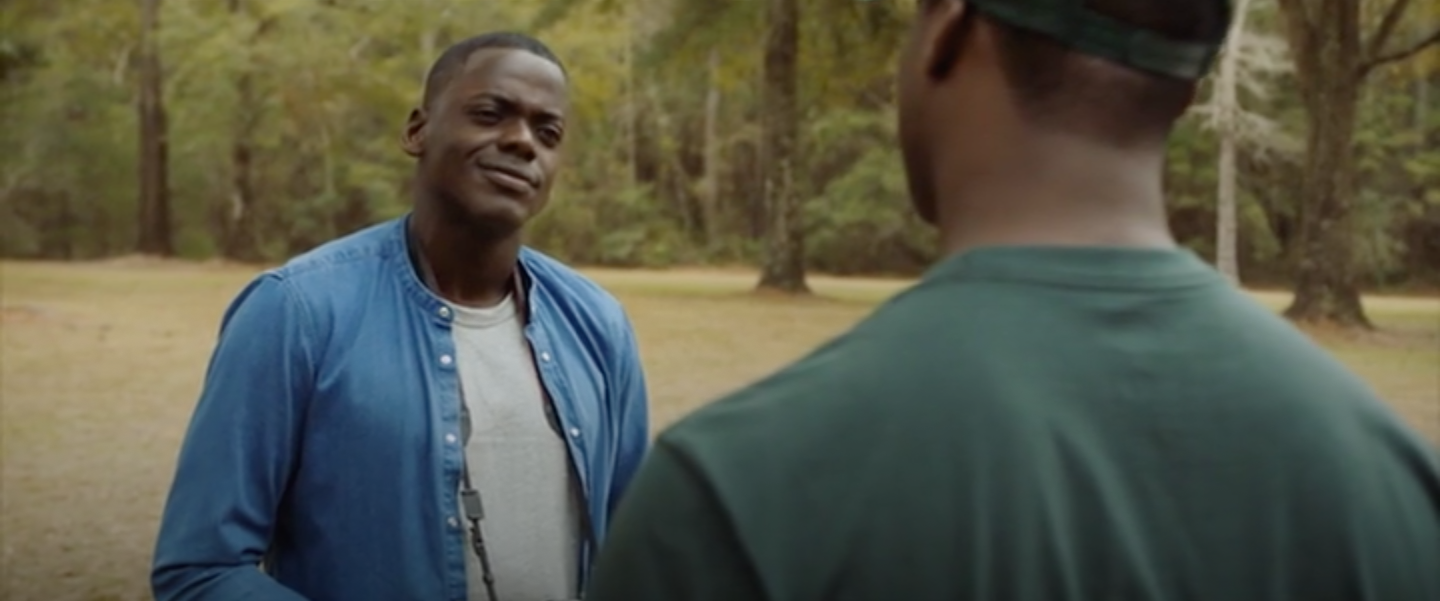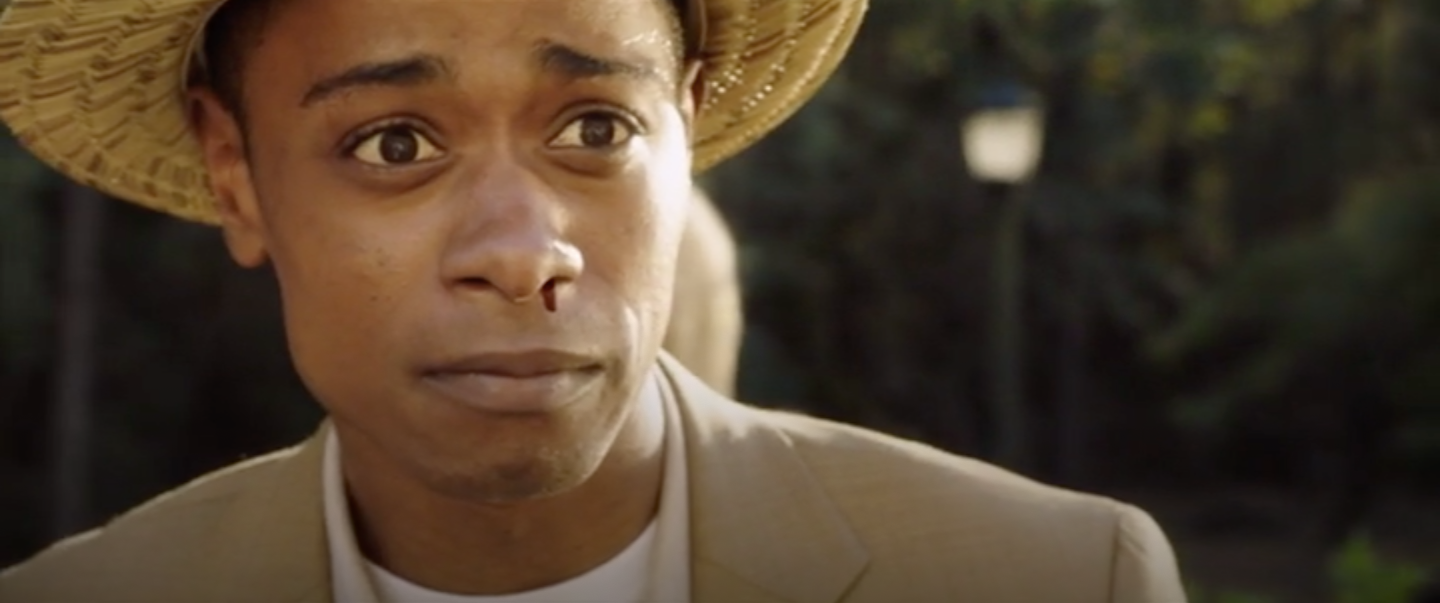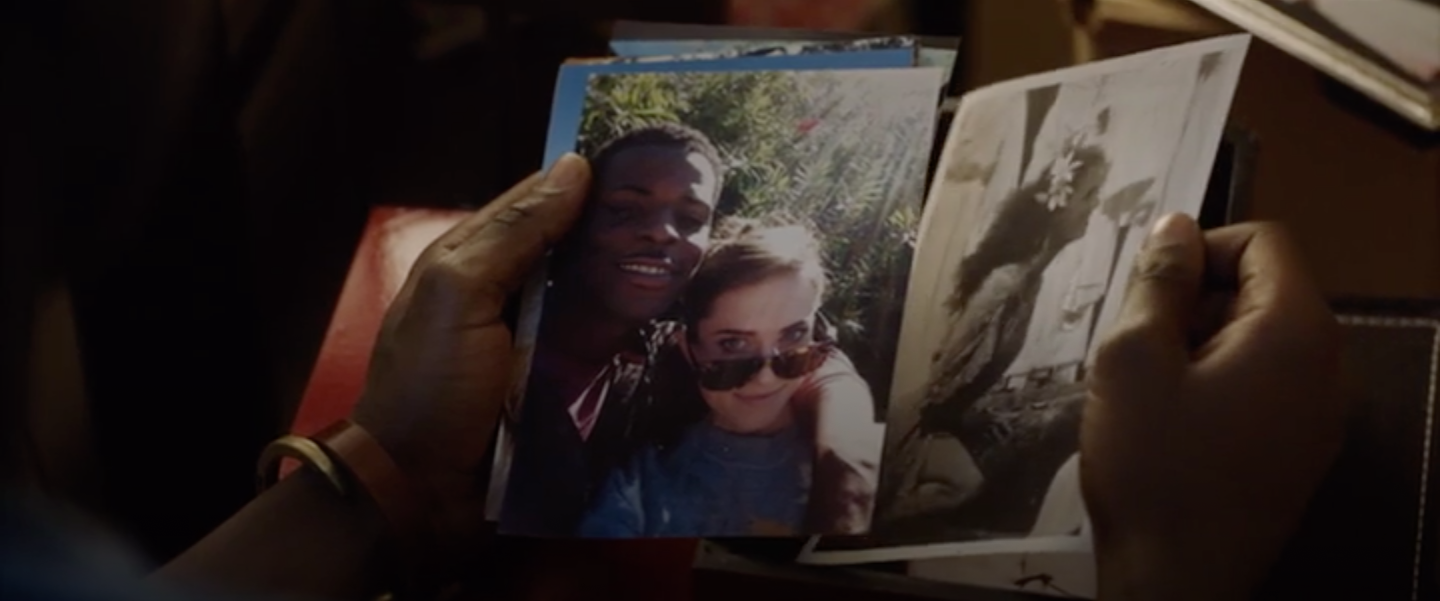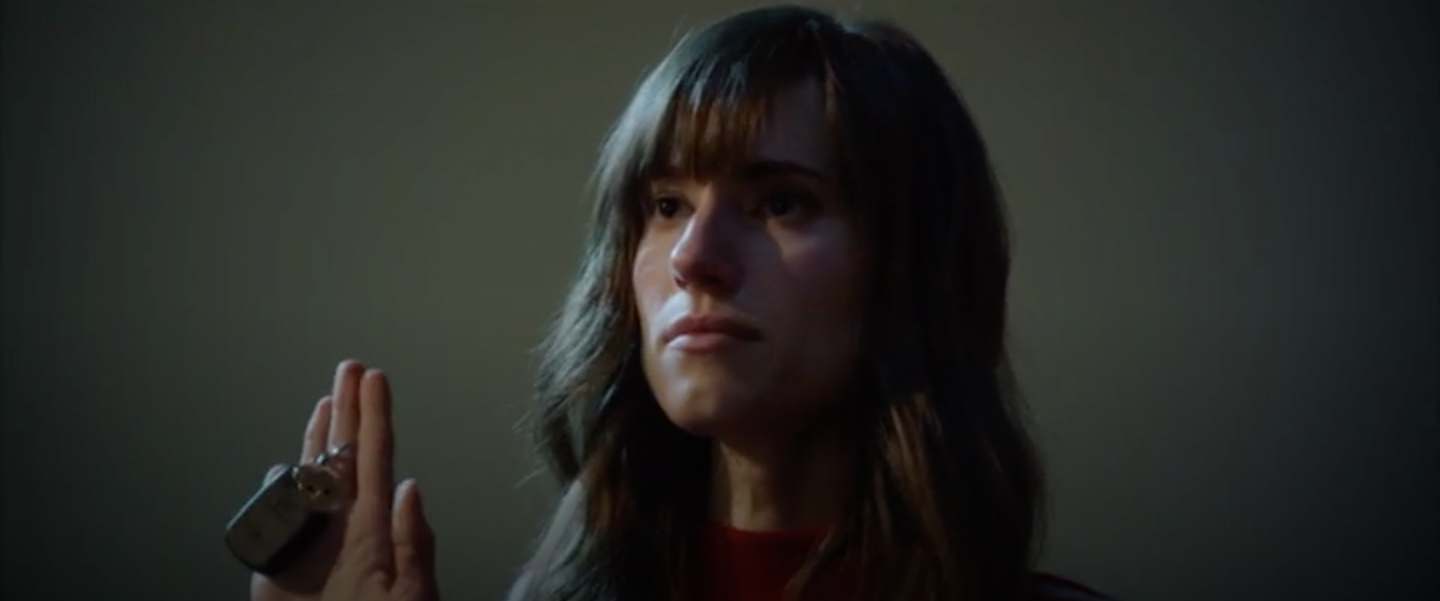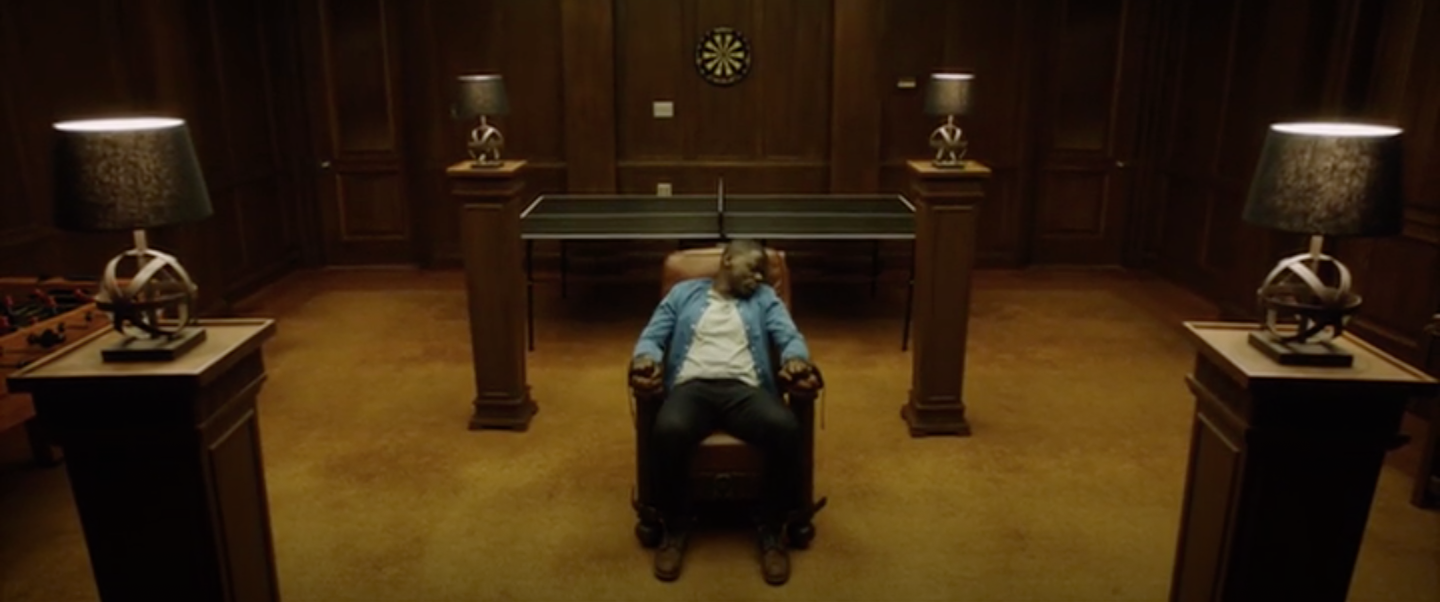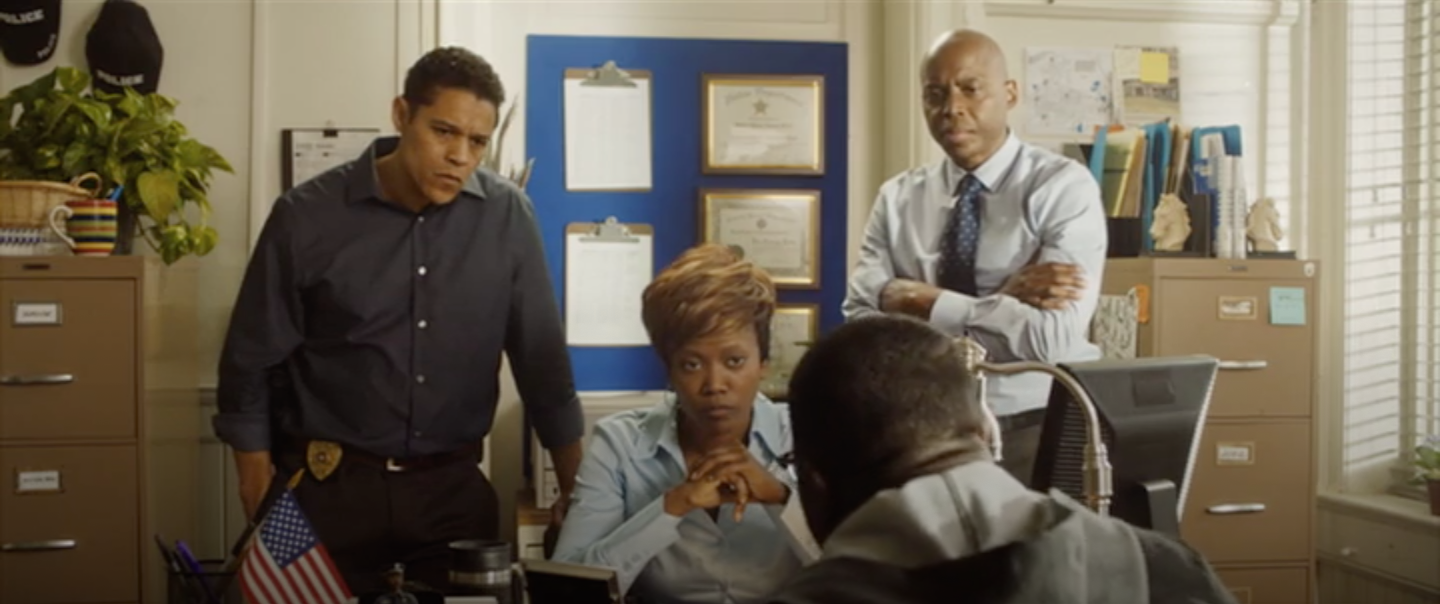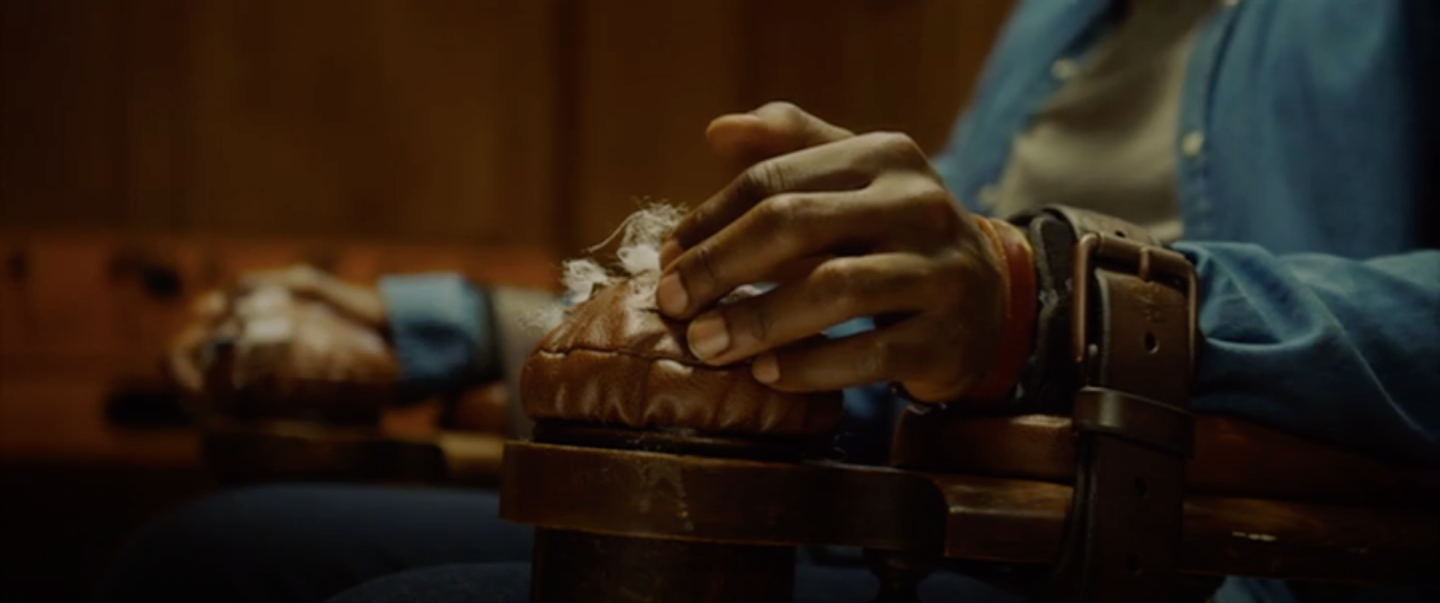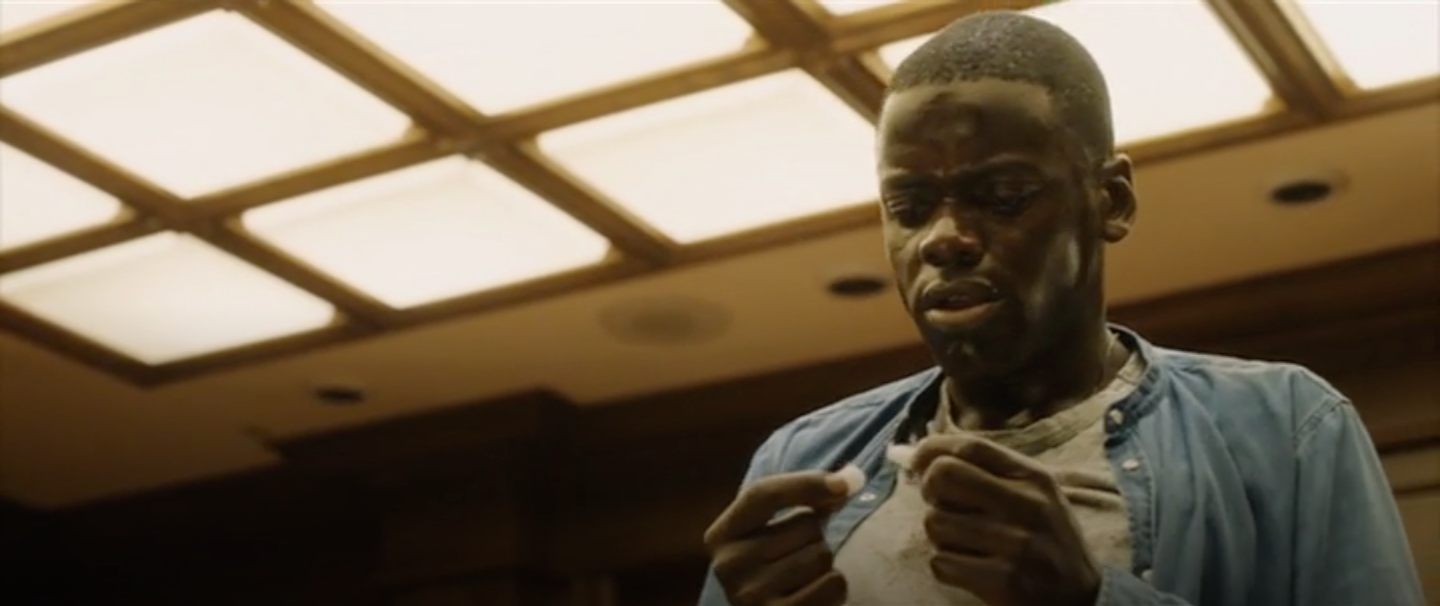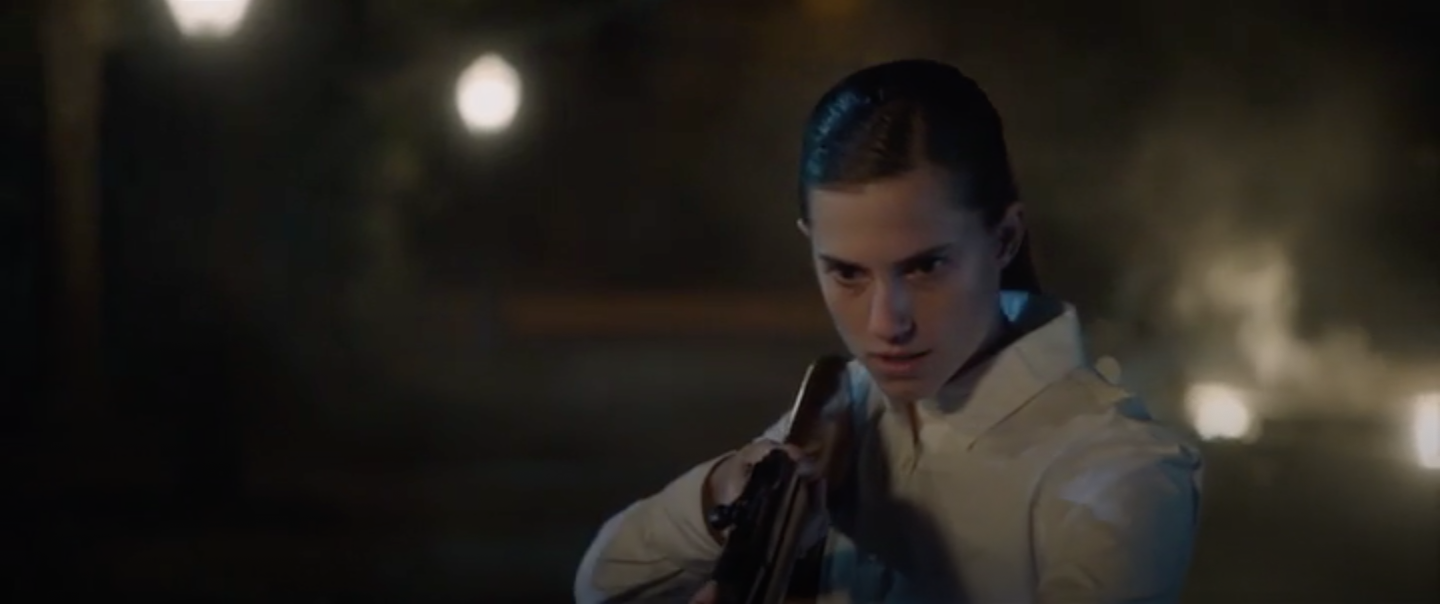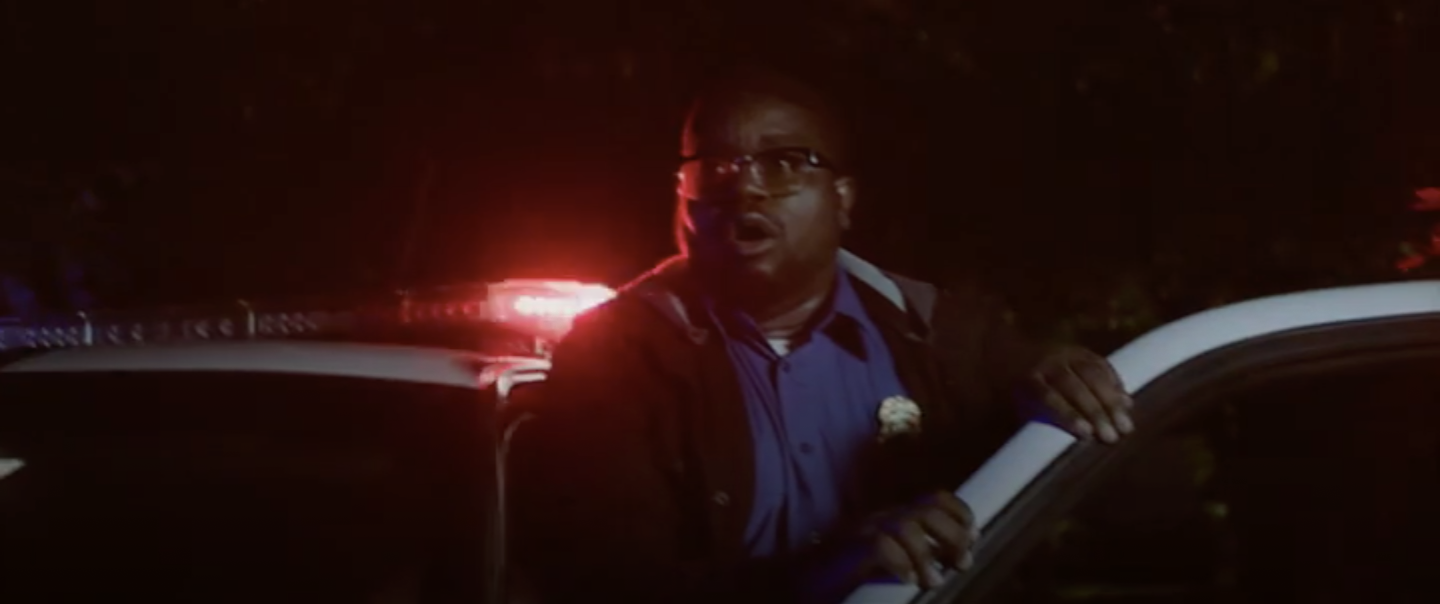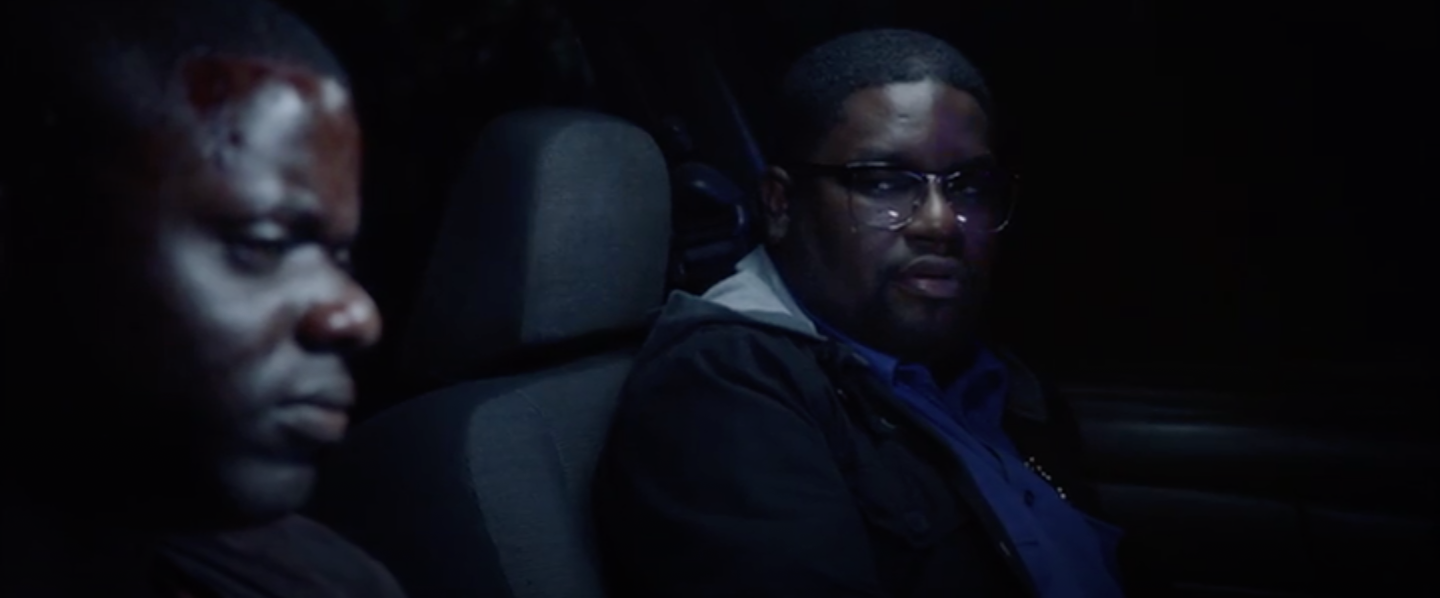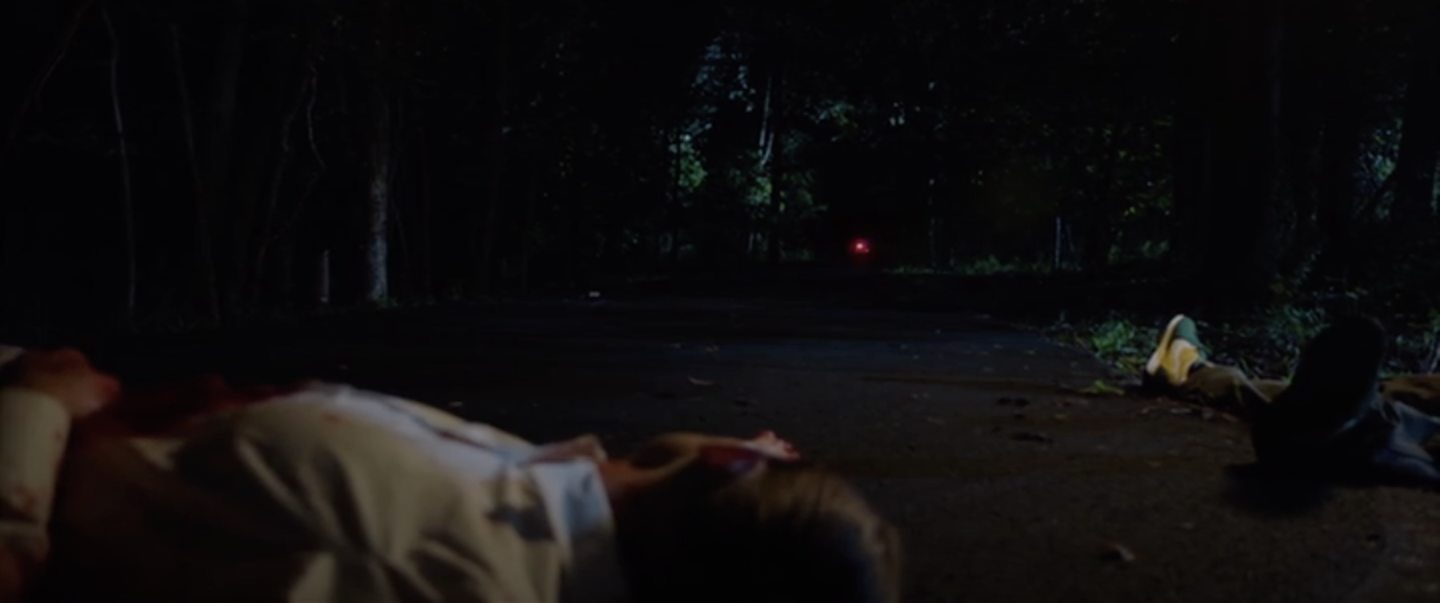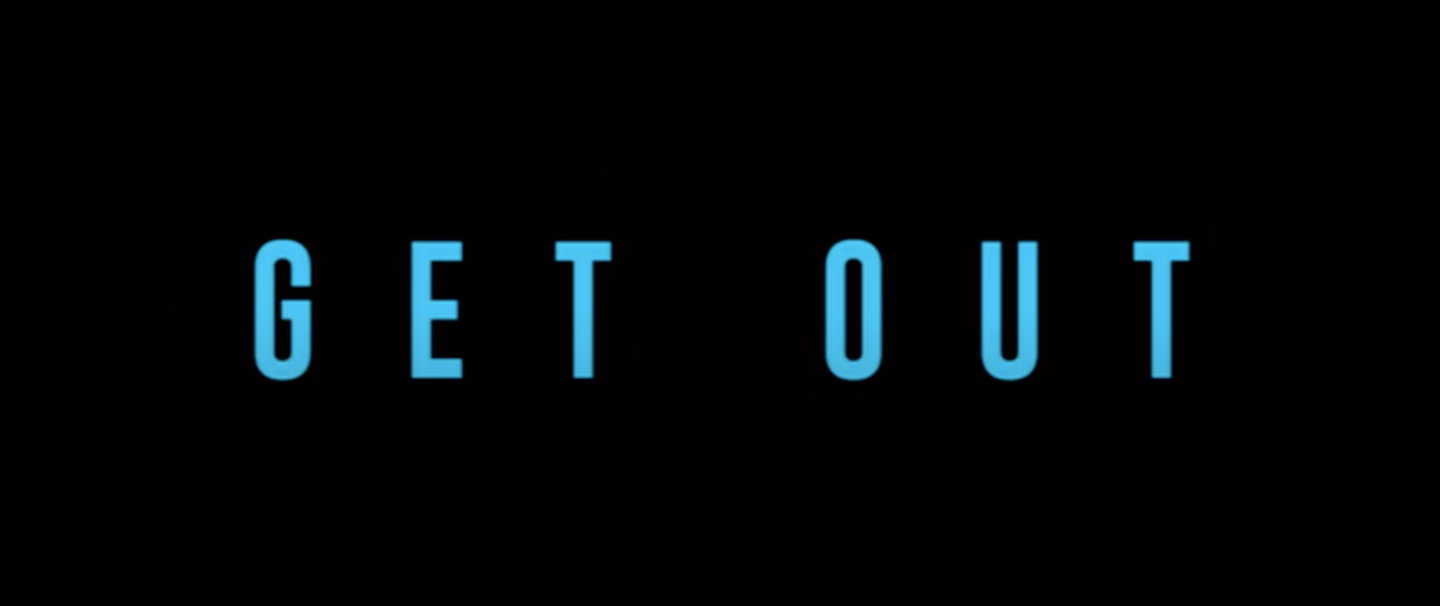Anybody who’s tried to write a screenplay will usually blast through Act I, slam the brakes in Act II, then doomscroll their media of choice until the screenplay file becomes a permanent fixture in the hard drive, somehow even looking dusty as the shamefully disenchanted writer hurriedly scrolls past it forever. The truth is that starting a screenplay is fun — finishing is why it’s a job. And then, as soon as you’ve made it to the end, the real writing is in the rewriting. When you watch a movie’s credits, “Written by” will preface an outed masochist.
Jordan Peele’s Get Out isn’t just a triumph in screenwriting, it’s one of the best scripts most screenwriters have ever encountered. As you go through the moments of the movie, you get a whole course in screenwriting, the potent builds and turns not just exceptional but eloquent and clear. If you want to learn how to structure a dramatic narrative, you can pick up literature from Blake Snyder, Robert McKee, Syd Field, Joseph Campbell, Gustav Freytag — anybody on that whole team — or you can just watch Get Out with a pen in hand. For this article, Movieweb vied for the latter.
Prologue: 00:00:52
If you have an action-packed script that requires escalation, where you know the audience is going to get bored from a lack of danger at the start, and you just want to promise them something wicked this way comes, a riveting prologue can be a spoonful of sugar to help the build go down. In Get Out's opening minutes, a Black man is kidnapped in the suburbs by an assailant in a white sports car whose face is hidden with a knight’s helmet. What happened to the victim? Who's the assailant? We have to wait to see, but know this world is more dangerous than it appears to those that didn't witness this event, like our protagonist.
Opening Image: 00:03:46
This can often accompany credits, but it’s the amuse-bouche you get walking into a Michelin star meal; the rest of the journey is what propels out of this image. In Get Out, we’re first driving through a forest to unsettling music, then we see the "brutal" beauty of protagonist Chris’s photography with “Redbone” by Childish Gambino playing. We get a moment of Chris’s girlfriend Rose buying pastries, then Chris cutting himself shaving, then the two kissing before the credits are over.
Realistically, in your script, this is all half a page of text extended to a couple of minutes of screen time to get your credits out, and much of your “opening image” is established by your prologue if you have one. But we do get two images that we’re supposed to think about moving forward from Get Out's opening image, the woods are a creepy place, and Chris’s Black face bleeding when covered in white shaving cream is given the old Kuleshov (shot-to-shot juxtaposition telling a greater story) against his white girlfriend buying pastries. What does it mean? The audience doesn’t need to know yet, but are lifting their anchors from this port.
Establish the Protagonist (Often Called Save the Cat, Theme Stated): 00:06:32
Movies are built on the audience experiencing the protagonist’s perspective, so your opening minutes are a vital time to hook your audience into empathizing with this person. Sometimes, the way to do that is getting the protagonist to “save the cat” out of the tree: they’re good, and you like them. Sometimes, like in American Beauty, you start with them masturbating in the shower: they’re human, and you get them. In Get Out, some of our establishment of Chris came from the impressiveness of watching his work as a photographer, maybe a dash of empathy for cutting himself shaving, but our first dialogue out of him is when Chris and Rose pack for a trip to Rose’s parents — Chris cautiously asking if Rose’s parents know he’s Black.
We see their relationship is flirty and loving, that Chris is smart but not condescending about how their interracial relationship works in ways Rose may not fully get, and that Chris may be walking into an awful time in order to please Rose this weekend. Bit by bit, we see that he’s thinking but still thoughtful. Around 00:08:31, Chris and Rose drive up, discussing Chris quitting smoking. He calls his TSA agent friend Rod, and Rose jokes about preferring Rod to Chris. Smoking humanizes Chris a touch down from being Mr. Perfect and the joke shows that Chris isn’t jealous given he laughs along.
But they hit a deer at 00:10:21. As Chris looks into the dying deer’s eyes, he has deep, traumatic empathy for its suffering. A cop comes to investigate the situation and inappropriately asks for Chris’s ID, given he wasn’t driving — but Rose bats the cop off. While Chris is knowledgeable and careful in trying to appease the cop before the cop can become violent, Rose’s (maybe naive) resilience seems to show that she’s willing to aid Chris against racist advances. In these crucial opening moments, we get instances of rooting for Chris, plus a bonus chance to value Rose as someone who wouldn’t let racists harass Chris, a welcome sign heading towards her parents’ house: we’ve met our protagonist and have a sense of the underlying themes.
Inciting Incident (Catalyst, Call to Adventure): 00:20:34
In Act I, you’re establishing the setting, the characters, and the conflict at the core of the movie. Your inciting incident is your first tip off that a conflict is even going to be happening, not its actual start. In Get Out, the inciting incident is learning from Rose’s parents, the Armitages, that the family’s yearly big get-together is this weekend — a detail Rose completely forgot when inviting Chris up.
Knowing that having to be a part of a massive gathering of white people may not seem like a great danger to white audiences, Peele has to throw in extra spice to make sure this event comes off as trouble on the horizon: Georgina, the Armitage's Black helper serving them iced tea, goes into a trance at the mention of the party, overfilling Chris’s iced tea as an unsettling, non-diegetic tone plays. Now, even if we don’t feel there’s something up about the party, Chris at least knows there’s something off about Georgina’s reaction to it.
Debate (Predicament, Second Thoughts, Refusal of Call): 00:26:07
A traditional dramatic narrative is rooted in a conflict for the protagonist — between what they want and what they need, hoping for the former on the first page and the latter on the last. Expectantly, that means if the protagonist is called to a specific adventure, that adventure isn’t what they want to be doing just yet — maybe it never will. For Chris, he can’t get the image of the dead deer out of his head and, unable to sleep, goes down for a smoke. At 00:31:00, Mrs. Armitage invites Chris to a hypnosis session about his smoking, an activity he is absolutely not interested in, but is politely coerced into regardless.
This “debate” could’ve been just Chris mentioning to Rose that he wouldn't prefer to stay for the party, but that would be a bit antithetical to his habit of doing well in navigating uncomfortable displays of racism. Instead, by focusing Chris’s attention on the deer, we can recognize that there’s not only trauma we don’t yet know about Chris, but a deeper ability to understand something fatally off-kilter may be going on in this house, and he has some nervousness about completing his "want" of staying the whole weekend for Rose's sake. His hesitancy to this hypnosis isn’t sudden, but accompanying a handful of unsettling incidents. Still though, Chris may be overthinking things and maintains his politeness.
Act One Turning Point (Lock-In, Acceptance of Call): 00:35:23
Looking at the whole structure now, Act I is where you explain the goals of the characters, Act II is where the characters try to achieve those goals, and Act III is where we learn if they succeeded or not. At the end of Act I, there’s a clear moment of transition from the protagonist not yet being roped into whatever the adventure is, to the next moment when they're suddenly in Adventure Time. In the hypnosis session, Mrs. Armitage learns from Chris that his mom died in a hit-and-run — likely why the deer was so provocative for Chris — and that Chris was unable to help his mom when he may have been key to saving her life. Chris’s “want” can be to get through this weekend with the Armitages, but now we know that his “need” is to find peace after his childhood inaction may have cost his mom’s life.
Mrs. Armitage paralyzes Chris, seemingly now behaving not just anti-therapeutically but full-on maliciously, and tells Chris to sink into the floor. Chris begs to stop, but is regardless sent down to a dark abyss where he can’t control his body — which Mrs. Armitage taunts as “the sunken place.” Chris wakes up in his bed. Obviously, for Chris, this was probably a dream; for us, it almost certainly wasn’t; whether Chris “accepted” it or not, he’s now locked into a dark adventure. We know his want and his need here, now we just have the rest of the movie to see if Chris can successfully pull off both.
Obstacles (Fun and Games): 00:39:05
Anybody who outrageously claims that Act II is “the filler act” has only written screenplays worthy of kindling; Act II is the molten core of the night between opening the tab and closing it, where twists and stakes are your left and right hooks, and where, whether you love it or not, unmotivated stories go to die. Inundate your protagonists with difficulties; the psychological rush of watching movies is riding a roller coaster: it’s playing with the mind’s fear of death against the immediate endorphin rush of the viewer realizing they're actually okay right now. So, for best results from your audience, provoke some real fear throughout Act II, even if the audience can be just about positive the protagonist on the movie poster isn’t going to die forty minutes in.
At the start, the other Black helper at the house, Walter, is incapable of addressing Chris as a fellow Black man, instead acknowledging Chris’s time in Rose’s mom’s office; Chris now knows it wasn’t a dream. By 00:42:25, the party begins and all the guests are weird to Chris, asking him racially provocative questions and even touching his muscles like he’s eligible for Best in Show. At 00:45:01, Chris finally meets another Black guest, Logan, who’s not only bizarrely obtuse towards seeing Chris as a fellow Black person, but is the man who was abducted in the prologue.
Horror movies like Get Out rely on the tension between not knowing what’s going on and desperately wanting to—that tension worsening when writers use dramatic irony, the tool of giving the audience information the characters don’t know. Chris doesn’t know “Logan” isn’t who he says he is, adding a major obstacle to Chris surviving this weekend that he doesn’t even know he’s being hit with right now. The important thing is that we do, and we’re the ones providing box office gross, so our needs come first.
At 00:46:39, Chris meets Jim, a blind art gallery owner, the two mutual fans of one another. For a moment, Chris is given relief by having a person to relate to, their interests and obvious systemic put-downs not comparable but certainly perceptible, Chris through racism and Jim through ableism. By gifting the audience a lack of an obstacle among obstacles, Peele allows us to lower our guard, making us more susceptible to a likely upcoming blow.
Midpoint: 00:55:31
Roughly halfway through the story comes maybe one of the most important shifts in the whole thing: a turning point of its own that divides Act II in half in many ways. Think of the midpoint as the moment where the protagonist’s want either completely changes — or their trajectory to get their want completely flips — and the protagonist must rethink everything. You could always cook your dinner by just leaving it on the burner, but you’re going to have some bits overdone and some under; flipping the food lets your heat explore every nook and cranny evenly; narrative possibilities must be explored with the same thoroughness.
Chris takes a picture of Logan to send to Rod, the flash causing Logan to lose his wooden personality, have a nosebleed, and screamingly plead to Chris to “get out” (the audience is aware that this phrase carries weight around these parts). Logan is restrained and taken into Mrs. Armitage’s office to be hypnotized out of this episode.
Was it possible for Chris to deal with the obstacles of casual racism? He’s always had to, so these obstacles weren’t new. But wasn’t Georgina and Walter’s odd behavior new? What about brother Jeremy Armitage’s desire to wrestle Chris at the dinner table? These were all uncomfortable obstacles to navigate, yes, but as we saw with how Chris was with the cop in Act I: these aren’t enough to break Chris’s social politeness; he’s used to playing on a bad ankle. But having a man snap out of a clear trance and beg you to escape this place is playing on a bear trap.
At 00:57:38, as Chris and Rose talk about this event alone, Chris knows that Logan's explosion wasn’t a seizure as the Armitages claim, and that Chris needs to leave now. Where Chris’s want was to make it through this weekend and meet Rose’s parents for Rose’s sake, this is too far and he’s got a brand-new want: get out. Back at the house, a noiseless auction is held for Chris, with Jim winning; we don’t know what this means yet, but the dramatic irony gives us ample room to celebrate Chris’s new want to flee. As Rose agrees with Chris, it’s time to go.
More Obstacles: 1:04:05
You’ve got a bit of time between your midpoint and your Act II turning point where your protagonist’s new goal must be tested almost maliciously: this is the point between the protagonist going in a new direction and the moment we believe all is lost. For Chris, his first obstacle that he experiences himself after the midpoint is texting Rod the picture of Logan, who Rod claims is actually Dre, a friend of a friend. Before Chris can discuss this revelation, his phone dies, largely due to Georgina “accidentally” unplugging it from its charger earlier. At 01:05:53, as Chris and Rose pack to hurry out, Chris discovers a box of photographs with Rose and other Black boyfriends, including ones of Rose with Walter and Georgina. Rose claimed at the beginning of the movie that Chris was her first Black boyfriend, so Chris may be facing his greatest obstacle yet: the person he loves and his only help out of here can’t be trusted either.
Bad Guys Close In (Obstacle 3): 01:07:25
As Chris and Rose try to escape, Rose struggles to find the keys in her purse and Jeremy blocks the door. Immediately, Mr. and Mrs. Armitage join in on the blockade. As Chris screams for Rose to find the keys, at 01:09:17, Rose reveals she’s had them the whole time, but is with her family on whatever the scheme is. Thirty seconds later, Mrs. Armitage uses the sound of a teacup stirring to hypnotically paralyze Chris. In another screenplay, this scene may be your disaster moment: the protagonist and audience believe all is lost, and certain death is inevitable. But another moment comes later that would likely be a better example of that sensation.
Disaster (All is Lost): 01:12:24
Chris wakes up in the basement, tied up and told by an old TV video that he’s going to be lobotomized, his brain replaced with that of a white person who would occupy his body as he lived in the sunken place forever. There’s absolutely no feasible way for Chris to escape this. Again, the audience isn't inclined to assume that the protagonist is going to fail in their ventures or be killed with time left on the clock, but this is your moment to ensure them beyond a doubt that the final thirty minutes of the runtime are credits and an in memoriam. And as we worry about Chris’s suffering in this hell, let’s take a step back to talk about Rod.
B Story: 01:10:51
Your B story is the story the audience follows to detour from the central narrative, typically introduced a bit into Act II, like when Chris called Rod about being hypnotized at 00:50:03 before the midpoint. Similar to having a prologue, a B story isn’t necessary for your screenplay, but can be a great way to set up a layered ending without falling into deus ex machina (an ending where all is suddenly saved without logical expectation from the audience that it would ever go in that direction).
Rod calls Chris' phone with no one answering. He goes to Chris' apartment and Chris still isn’t home, despite saying he'd have arrived by now. Rod calls again, but Rose answers, speaking oddly and tipping off to Rod that she’s hiding the truth. Rod looks up Andre Hayworth, the man he believes Chris sent a picture of, learning Andre’s gone missing. At 01:15:37, Rod goes to the police, proposing the Armitages are brainwashing Black people into being sex slaves; the police don’t take him seriously. At 01:19:05, Rod calls Rose with the intent to record her, but Rose speaks seductively towards Rod, maybe even thinking of him as a new victim for this plot, and Rod hangs up in fury and fear. What’s Rod going to do? How will his choices affect Chris? As the script moves forward, a B story can give the audience asides to justify temporal jumps in the main narrative, comic relief, or even a bit of hope, be that hope warranted or foolhardy.
Crisis (Dark Night of the Soul): 01:22:03
Chris is explained the lobotomy procedure via video chat by Jim, the man he learns “purchased” him, ripping the cotton out of the chair’s armrests out of nervous habit. Think of the disaster as the prompt and the crisis as the protagonist’s response. What’s special and smart about Get Out’s crisis is that Chris looks at the cotton with a level of fascination, tipping us off that he’s got an idea, but doesn't tell us exactly what Chris’ plan is, allowing us to be just as surprised as the Armitages. We don’t have to know that Chris’s response to this disaster is thought out, brilliant, or even existent, but as long as we retroactively realize any of those things, the screenplay has a written crisis after its disaster and prior to Act III.
Act Two Turning Point: 01:28:18
The TV provides Chris with the hypnotizing sound of a tea cup stirring, knocking him out. Jeremy arrives to unlatch Chris and take his paralyzed body into the operation, but when Jeremy isn’t looking, the surprisingly un-paralyzed Chris bludgeons Jeremy. How did this happen? Chris takes wads of cotton out of his ears, what we now know as his crisis response to the disaster. Chris’s midpoint goal of "getting out" is back on the table as we fling into Act III.
Over the next five minutes of screen time, Chris kills all the Armitages but Rose, stealing the sports car and calling the police, when at 01:33:28, Chris accidentally hits Georgina with the car. For Chris, Georgina’s in the sunken place and may have a means of escaping somehow, but is more so the newfound victim of a hit-and-run, with Chris about to do nothing to save her as believes he did as a child. Chris’s greatest need (finding peace after his mom’s death) confronts his current greatest want (getting out of the Armitage’s grasp), and where a protagonist’s wants overwhelm their needs at the start of the script, we’re now in the endgame where the character arc is being completed, the needs overwhelming the wants: Chris has to get out of the car to bring Georgina’s unconscious body along for the getaway. Of course, at 01:34:36, Georgina wakes and attacks Chris, causing him to wreck the car, killing Georgina. It isn’t important that he succeeds in completing his greatest need, but that he received the catharsis and character arc completion of acting on it.
Final Confrontation: 01:34:52
The final boss battle that everything has been leading to: protagonist versus antagonist; Chris versus Rose. As Rose and Walter — who we now understand to be harboring the brain of Rose’s grandfather — go after Chris, Chris uses his camera flash to stun Walter out of his hypnotism. Walter requests the gun from an unaware Rose to shoot Chris, and instead shoots Rose, then himself before he can return to his hypnotic state as Armitage Sr.’s puppet. Rose still lives after the gunshot, claiming she loves Chris, so the tortured, humiliated, and endangered Chris begins strangling her. Ultimately though, he can’t finish the job — the audience can debate if this is him being unable to complete his arc of distrusting Rose or the power of his goodness being incorruptible by Rose’s evil. Regardless, a police car arrives and Chris puts his hands up, understanding exactly what this situation looks like and what tends to happen with police and Black men in the vicinity of white women, let alone a white woman fully willing to falsely accuse Chris of anything.
Twist: 01:38:20
Famously, in the original iteration of the draft, Peele had Chris arrested for attacking the Armitages and falsely demonized as a Black menace against white solace. Ultimately, Peele recognized that the news had enough everyday stories with the same outcomes, and the ending wouldn’t have functioned as a shock to anybody. Instead, a victory was sorely needed. As the “cop car” opens its door, we see it’s an airport police car, and the driver is Rod, here to save Chris. The B story has come to fruition, every event leading to this final climax: Chris is safe and clear.
Dénouement (Wrap Up, Resolution, Refusal of the Return): 01:39:45
After chastising Chris a bit for not listening to his advice about visiting white parents, Rod lightly gloats about successfully finding Chris as a respected agent of the TSA, though Chris can’t laugh. As the two drive off into safety, Chris is only traumatized by having to endure this encounter. Sometimes, a resolution is pure ecstasy and reflection on what the protagonist accomplished, sometimes it's the somber stare of the survivor. Your dénouement is the act of striking the set after the musical finished its successful run, cleaning the kitchen after a poor night of cooking burnt half the cabinets, clarifying to your audience that the protagonist may try to go back to their old self but can't, for better or worse. For Peele, it's shown by Chris no longer laughing at Rod's jokes, at least not this time.
Final Image (Master of Two Worlds): 01:40:20
The final shot of the film is likely the final action line in your script. For Get Out's final image, Rose succumbs to her gunshot wound as she watches Chris successfully escape. Chris didn’t just thwart her plot to own him, he thwarted a plot by the Armitages extending across dozens of Black men and generations of planning. While Rose had the jump on him with an unexpected betrayal, leading him into a world in which he was kept in the dark, he was able to master that world as a novice, beating her supposed specialized expertise here. Just as the very opening image was the foreboding song Sikiliza Kwa Wahenga alongside the woods to imply danger, its return during our exit is a celebration of Chris’s escape — a mocking of Rose’s inability to enslave Chris.
Epilogue: N/A
The movie ends then and there, with no explanations of what happens to Chris the next day, week, or lifetime. Obviously, this movie could've had Chris meeting another woman at a gallery and seeing how he reacted, or going to his mother's grave, or finding a new pride in the subjects of his photography, but Peele wanted to keep it simple and blunt: it doesn't matter what Chris does after he got out, the point of the film was getting out, and we're done here.
It's important to treat structure like learning a new language, where you only have the confidence to play with the syntax once it's studiously purposeful and pointed, not ignorantly careless and impossible to follow. Yes, you can break with traditional structure, as a matter of fact you can write incredible and vital screenplays that way, but it's only when you've mastered the arc of the dramatic narrative so fluently that you don't even need to one-by-one translate your words into sentences that you can get into the rebellion that is poetry. Get Out is almost beat for beat consistent with traditional structures and not for a moment does that make the movie feel predictable, but sturdy.

